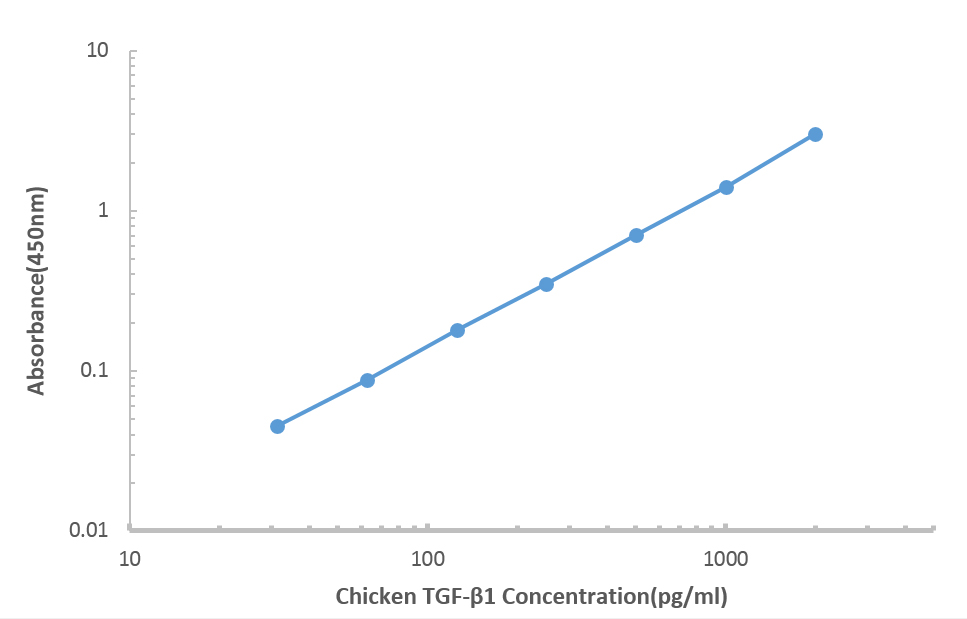Chicken TGFB1 ELISA KIT (96 T)
Size
Other products for "TGFB1"
Specifications
| Product Data | |
| Format | 96-well strip plate |
| Assay Type | Solid Phase Sandwich ELISA |
| Assay Length | 4 hours |
| Signal | Colorimetric |
| Curve Range | 31.25-2000pg/ml |
| Sample Type | Serum, plasma, Cell culture supernatant |
| Sample Volume | 100 uL |
| Specificity | This assay recognizes both natural and recombinant Chicken TGF-β1 |
| Sensitivity | 6 pg/mL |
| Reactivities | Chicken |
| Interference | No significant interference observed with available related molecules. |
| Components |
|
| Background | TGF-β1 (transforming growth factor beta 1) was first identified in human platelets as a protein with a molecular mass of 25 kilodaltons with a potential role in wound healing. TGF- β1, TGF- β2, and TGF- β3 all function through the same receptor signaling systems. They are members of the large TGF-β superfamily. TGF-β proteins are highly pleiotropic cytokines that regulate processes such as immune function, proliferation and epithelial mesenchymal transition. It was later characterized as a large protein precursor (containing 390 amino acids) that was proteolytically processed to produce a mature peptide of 112 amino acids .TGF-β activation from latency is controlled both spatially and temporally, by multiple pathways that include actions of proteases such as plasmin and MMP9, and/or by thrombospondin 1 or selected integrins. Although different isoforms of TGFβ are naturally associated with their own distinct LAPs, the TGF-β1 LAP is capable of complexing with, and inactivating, all other Chicken TGF-β isoforms and those of most other species. Mutations within the LAP are associated with Camurati Engelmann disease, a rare sclerosing bone dysplasia characterized by inappropriate presence of active TGF-β1. |
| Gene Symbol | TGFB1 |
| Gene ID | 100873157 |
Documents
{0} Product Review(s)
0 Product Review(s)
Submit review
Be the first one to submit a review
Product Citations
*Delivery time may vary from web posted schedule. Occasional delays may occur due to unforeseen
complexities in the preparation of your product. International customers may expect an additional 1-2 weeks
in shipping.






























































































































































































































































 Germany
Germany
 Japan
Japan
 United Kingdom
United Kingdom
 China
China
